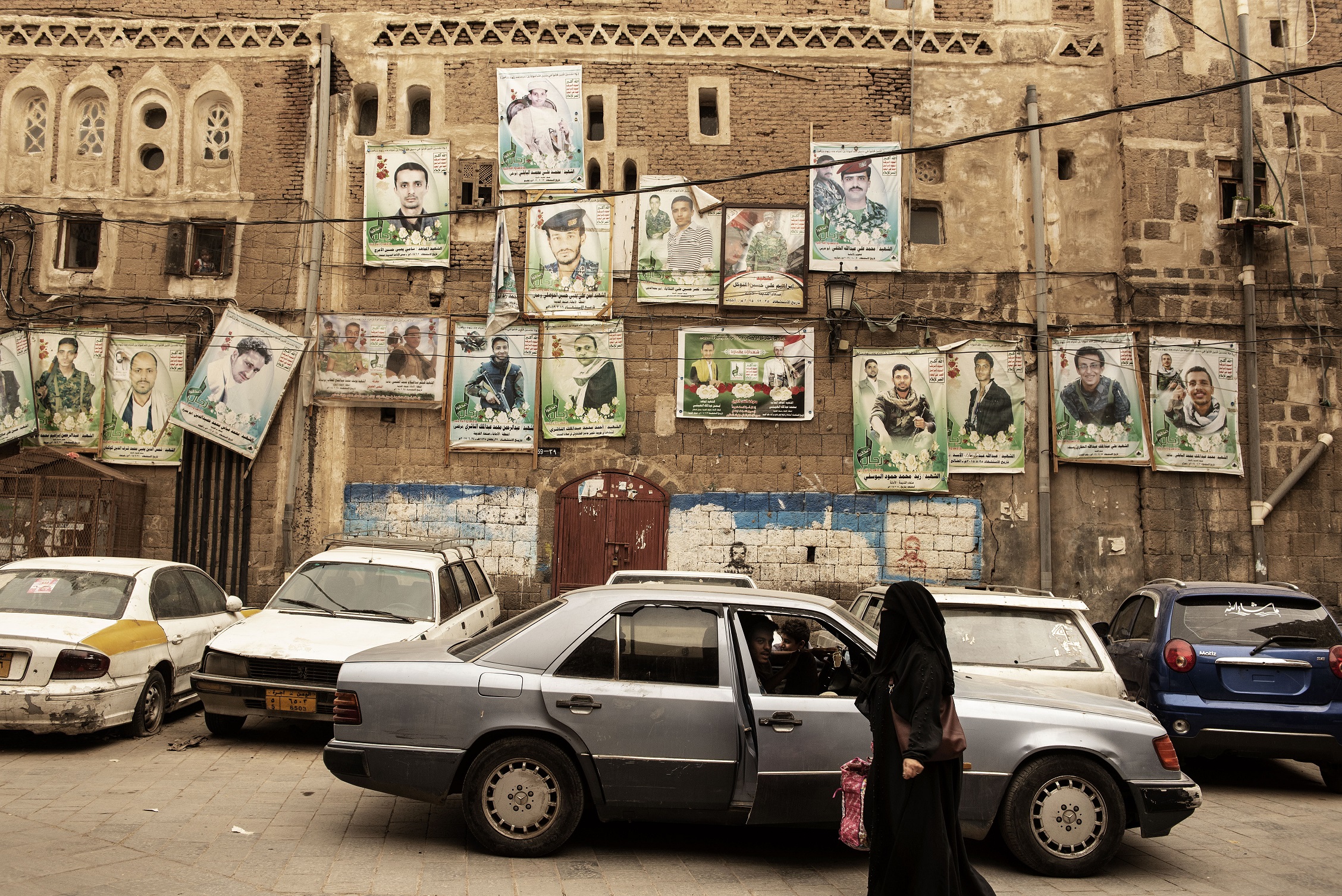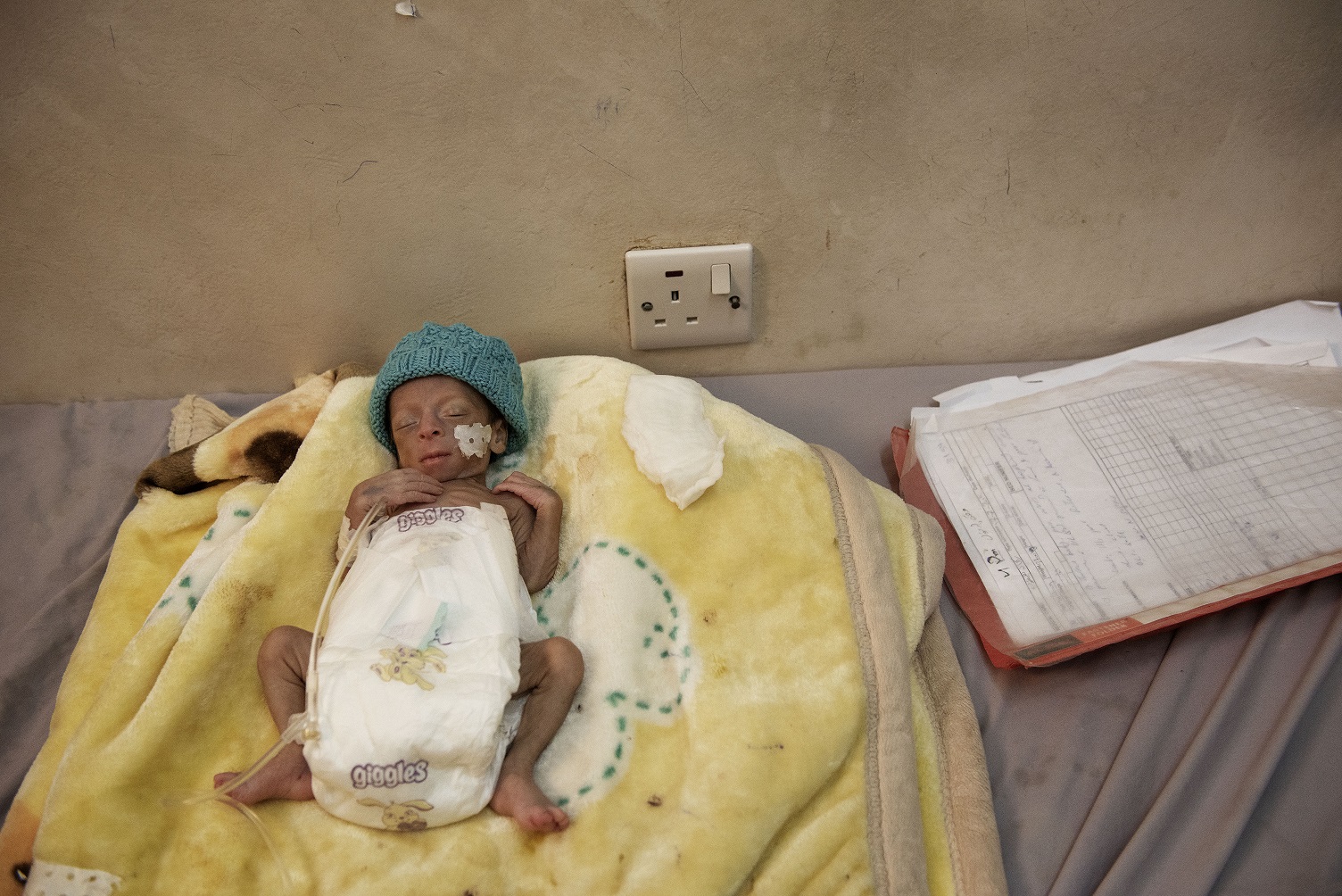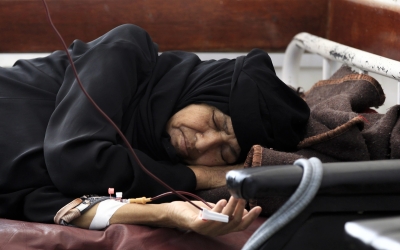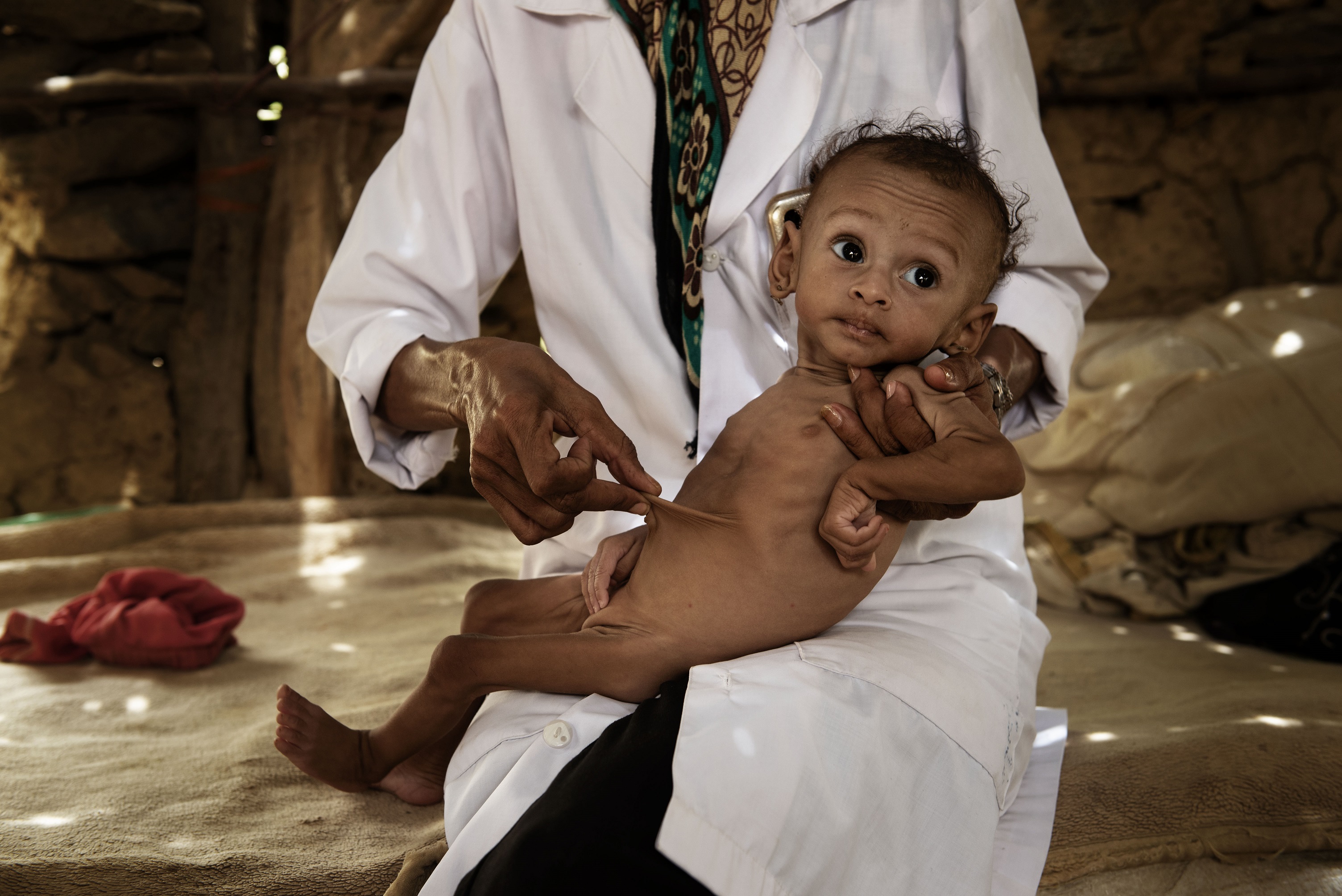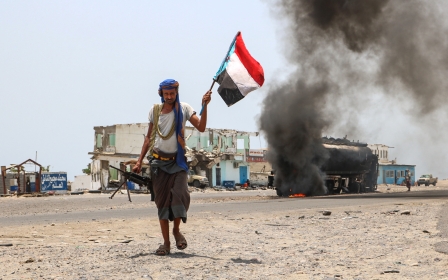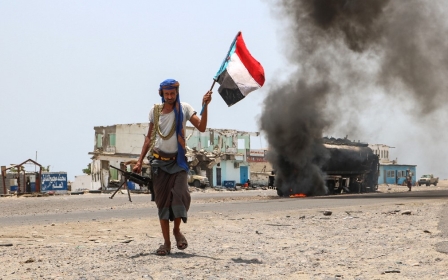'Everything is missing': Yemen war's front lines start at civilians' doorsteps
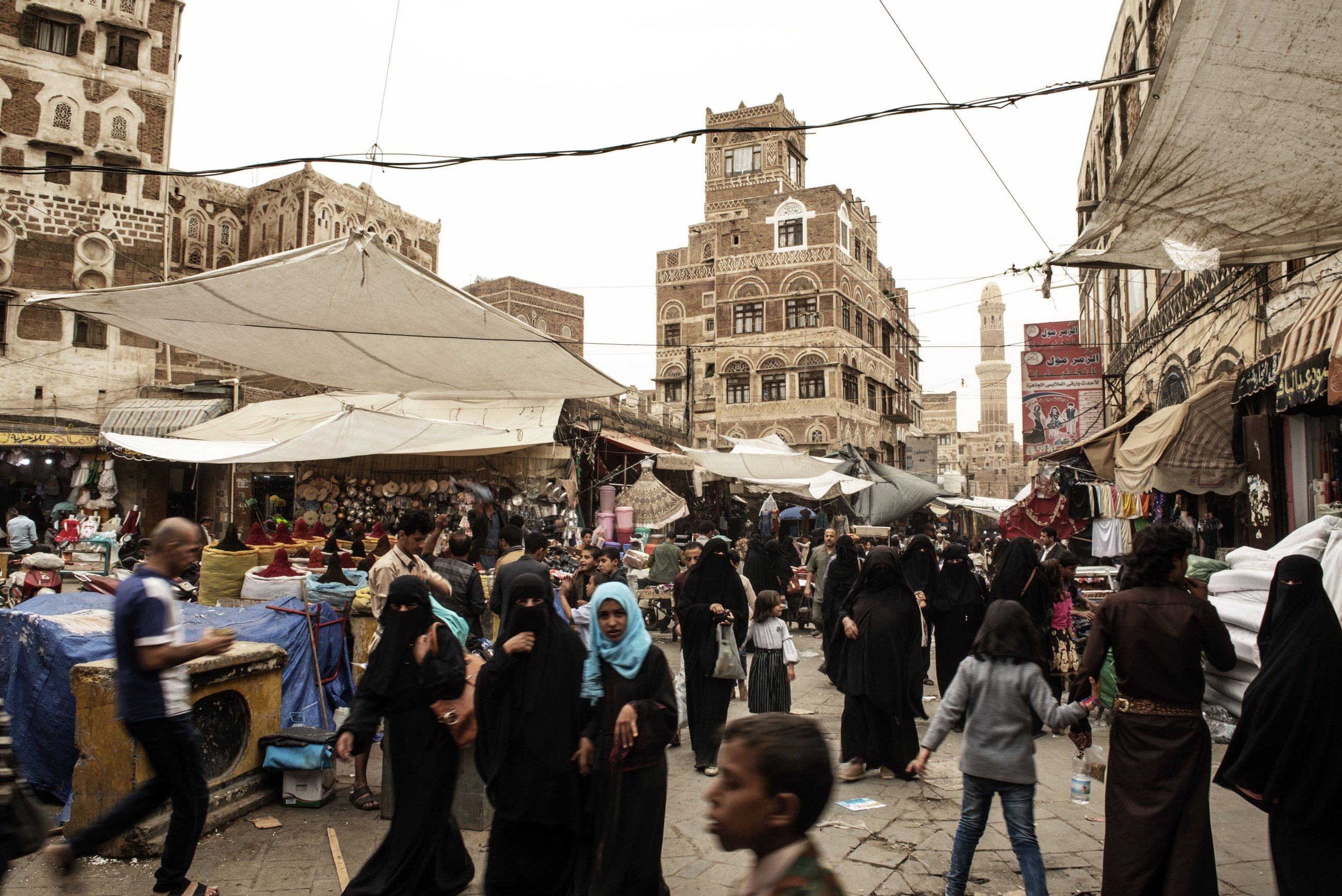
Ibrahim al-Abid, a 14-year-old boy in a sand-coloured caftan, moves his hands nervously to mimic the oscillation of his home as he recalls the moment when the neighbouring building was hit by a missile.
He felt the walls shaking, and immediately rushed out of the house to help.
What he found, lying under the rubble in the courtyard, were 10 of his relatives who had gathered to dine together.
“They were waiting for Ahmed to return from the bakery. A few minutes after he arrived, the building was hit,” Abid tells Middle East Eye. "They all died."
Looking up at the sky, he proceeds to describe the sound of the drones, and his fear.
New MEE newsletter: Jerusalem Dispatch
Sign up to get the latest insights and analysis on Israel-Palestine, alongside Turkey Unpacked and other MEE newsletters
“In war, you learn as a child that when you hear the strike, it’s already too late,” Abid says as he walks on the debris of the building in Sanaa’s Old City.
“We are used to it now,” his cousins, Mohammed, 12, and Kamal, 11, say.
One of their cousins could have survived that night, had the ambulance on the scene been equipped with oxygen.
“Everything is missing here,” Abid says.
A vicious circle
Stepping into Sanaa’s old souk, one may question the severity of Yemen's war. The markets are full of fruits, vegetables and qat, a mild narcotic plant popular in Yemen. Store shelves are stacked with bread, and pharmacies can provide all types of medicine.
Yet, across the capital, basic necessities are missing from homes, and hospital wards are filled to capacity with malnourished children.
The entrance to Al-Sabaeen hospital in Sanaa is crowded from the early hours of the morning with mothers, children and the elderly.
'The lucky ones return, the others die'
- Doctor, Abdullah Aji
Children come in with a dual set of symptoms: cholera and malnutrition, Dr Abdullah Aji says as he puts on a medical mask and enters the triage area.
“We treat cholera, then malnutrition. Then we send them home, or to the refugee camps where they live, but then everything starts from the beginning,” he tells MEE.
Aji speaks of a vicious circle where treatment is only temporary for children living in extreme poverty, with no food or potable water.
“The lucky ones return, the others die. And the majority of those who die remain outside the statistics because they die in remote villages,” says Aji.
For every room he enters, Aji presents his patients using short, almost mechanical, sentences:
- “Asma is one and a half years old. She should weigh 10 kilos, but weighs just four.”
- “Mohammed is 10 months old. He should weigh eight kilos, but weighs two and a half.”
Aid no longer comes
Fatima, Mohammed’s 28-year-old mother, does not cry in the face of her son’s wrinkled skin and protruded ribs. In her monosyllabic whispered responses, there is a resignation to life’s daily struggles.
“We were already poor, but now we are beggars. We have become a country of beggars,” she says wearily.
Fatima’s husband had worked as a driver in Saudi Arabia but lost his job after the war in Yemen started in 2015.
Every now and then, he brings home YER 1,000 ($4) in alms, which is barely enough for a bag of flour or sugar.
“But the aid no longer comes,” Fatima says. “We have not received anything in three months.”
“Everything is missing,” she adds.
'War has caused diseases that we have not seen in years'
Already declared as the world’s most serious humanitarian crisis, the situation in Yemen is likely to get worse, with the United Nations saying more life-saving programmes will be closed over the next two months due to lack of funds.
In February, international donors pledged $2.6bn to help the UN and its partners meet the urgent needs of more than 20 million Yemenis.
However, the UN said in a statement in late August that only less than half of the amount promised had been received.
It said only three of its 34 major programmes in Yemen were funded for the entire year, while several had recently stopped and a number of projects designed to assist deprived families had not been able to start, including the construction of 30 new nutrition centres.
"Unless the funds promised at the pledging conference are received in the coming weeks, food rations for 12 million people will be reduced and at least 2.5 million malnourished children will be cut-off from essential services," the UN statement said.
Moreover, 19 million people will not have access to health care, and tens of thousands of displaced families might find themselves without shelter, it said.
In normal situations, Aji says, vaccines alone would be enough to treat cholera and diphtheria, both highly contagious. But a shortage of medical specialists and supplies has prevented doctors from containing the epidemics.
“The war has caused diseases that we have not seen in years to re-emerge, and families do not have the money needed to get to medical centres,” he says.
Restrictions caused by a partial blockade imposed by the Saudi-led coalition, lengthy inspections and bureaucratic hurdles have slowed down the entry and distribution of medical supplies and essential goods, as well as driven up the prices.
Meanwhile the UN has accused the Houthis of diverting food aid meant to reach the needy.
Between a rock and a hard place
The road north towards Saada, a northwestern province bordering Saudi Arabia, goes through valleys, rural areas, huts made of leaves and mud, and refugee camps scattered between mountains.
As a rebel stronghold, Saada has been regularly targeted by the coalition since it intervened in Yemen to support the internationally-recognised Yemeni government against the Houthi rebels.
Most of the displaced in the Khamir camp, in neighbouring Amran province, have fled Saada, but the journey to the camp can be dangerous.
Alima Mussala Abdullah and her family were among dozens trying to escape the outskirts of Saada when their bus was hit by a rocket.
'Sometimes we have nothing to eat'
- Displaced single mother, Alima Mussala Abdullah
Shrapnel hit one of her eight children in the back and her husband suffered a fatal heart attack.
Like other displaced families, Abdullah now lives in a small cave at the edge of the camp. She had been taking care of her family alone since her husband’s death.
Abdullah says they receive food aid sometimes, but that has become increasingly rare.
“Sometimes we have nothing to eat... And so I leave the camp to beg or I pick up plastic to sell for a handful of rials, but the little I put together in the morning is already gone by the evening.”
Like many others, Abdullah seems to be numbed by hardship. She doesn’t complain, she says, but the memory of the escape and of her husband’s body lying on the asphalt has put a strain on her, at times pushing her to be violent with her children.
A recent report by Armed Conflict Location & Event Data Project (ACLED), a database tracking violence in Yemen, said the conflict has killed over 91,600 people, including 11,700 civilian lives lost as a result of direct targeting.
The escalation of the war, which has turned into a multi-sided conflict, has caused economic collapse in Yemen, a crash in the value of the currency and new waves of unemployment.
According to the UN, around 80 percent of the population is dependent on humanitarian aid to survive.
Ali Nassir lost his job as a driver because he could no longer afford the fuel. But even if he did, he says, people cannot afford to pay for transportation.
“I had to choose between petrol and food,” Nassir tells MEE.
Carrying his then 13-year-old disabled son on his shoulders, Nassir had set off with his nine-month pregnant wife and six children on foot from Saada to the camp in Amran.
The family’s situation, however, did not get better. Nasser’s new-born daughter suffers from acute malnutrition, while his 14-year-old daughter Fatima has become a street beggar.
Nassir said he was forced to ask Fatima to help him look after the family.
Meanwhile, his disabled son can be seen crawling around the dusty camp, with knees marked by calluses. Nassir cannot afford a wheelchair.
To the west of Amran, in the town of Aslam, located in the Hajjah province, Mohammed and Mariam Agrabi own two jerry cans of water and a sack of flour.
Mohammed lays down his eight-month-old daughter Nada on a bed made of straw. She barely weighs three kilos.
Like other parents interviewed for this story, Mohammed does not show any emotion as he watches over his starving child. He says he knows that crying or screaming would not help their situation.
Mariam, who doesn’t know her own age, says the water is dirty and it’s making Nada vomit, but they cannot afford to transfer their daughter to the hospital.
For three days, she has had nothing to feed her baby, she says.
“When Nada cries from hunger, I suffocate.”
This article is available in French on Middle East Eye French edition.
Middle East Eye delivers independent and unrivalled coverage and analysis of the Middle East, North Africa and beyond. To learn more about republishing this content and the associated fees, please fill out this form. More about MEE can be found here.


